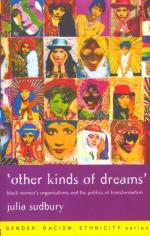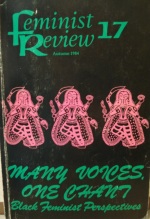Yesterday, Dieuwertje Dyi Huijg, Sharlene Khan and myself ran a workshop titled “Radical politics, critical academia: talking the talk, but walking the walk?” at the Critical Diversities conference at Southbank University. We organised it to create a space to discuss the frustration we all feel as well as what we can do to challenge the discrepancy between the “talk” about diversity and social justice in supposedly critical academic disciplines and spaces and the distinct lack of “walking”: the lack of attention to accessibility within academic spaces; the lack of attention to how structural power operates not just ‘out there’ but also ‘in here’; the constrant micro-aggressions and perpetuation of neoliberal logics in spaces where academics are giving papers about resisting them. I am grateful for the conversations and connections we made with other conference participants on these topics both during and after the workshop. Thank you to everyone who participated! Dyi, Sharlene and myself each shared some of our personal reflections at the beginning of the workshop, and below I have copied the text of my talk.
~~~~
Feminist academia in Britain has a race problem. No, I’m not talking about every single conference or every single white feminist, but institutionally and systemically the problem persists. I see feminist conferences as spaces where this problem often plays out, and I want to talk about that, from my perspective as a white person researching racism and whiteness within British feminism.
How many times have you been to a feminist conference, looked around the room, and seen a sea of white faces? Since starting my PhD in 2008, I have found that academic feminist conferences – with some exceptions – are some of the whitest spaces I inhabit. I mean this both numerically and politically. On more than a few occasions I have been at feminist conferences where race was not discussed at all, where the fact that 95% of the people in the room were white was not discussed at all. Where it was not until the closing plenary where someone – often a woman of colour – raised the lack of attention to race and racism at the conference, the lack of feminists of colour at the conference, most commonly met with an awkward silence followed by a vague commitment about “next time”, “next year”? But next time it’s always next time. When it comes to race, feminist conferences are like Groundhog Day: the patterns repeating, over and over again.
Not that all the patterns are the same. While some conferences are completely oblivious to race, there are others which are advertised as race-aware; that frame their call for papers around intersectionality and difference. Yet when the day comes, hardly any papers even mention black feminism. Because intersectionality these days has become a free-floating signifier for any two or more identity-categories; a concept which can be used without any acknowledgement of its origins and history. A conceptual frame, as Kimberlé Crenshaw put it earlier this year, which can now be “enjoyed without the female black bodies that originally came with it”.
Then there are the panels and spaces at feminist conferences where we do have conversations about racism in feminism, but where white feelings and white comfort is prioritised. Over and over, I have witnessed and felt the intense resistance from white feminists to actually staying with the discomfort of this conversation, particularly when it means talking about racism within feminism as something which exists in this room. Racism in feminism becomes always located in the past, in the United States, at another event, in FEMEN performing topless jihad in front of a mosque, but never here, now, in this room.
I am aware of my ambiguous position here. I am white, and I both benefit from and resist white supremacy within feminism. I do not stand out at feminist conferences – my presence is not scrutinised; I am assumed to belong. I can choose when I speak about racism and whiteness, when I want to make it an issue. My whiteness means I am also more likely to be heard and listened to by other white feminists when I do speak about it. My PhD is my training to become an expert in feminism and race, and institutional racism means I am more likely to secure a job in these fields. After I have given papers at conferences, I often get praised by other white feminists, who say I’m doing important, challenging work. My whiteness makes it easier for them to talk to me about it. Others get annoyed with me, say I need to “complicate whiteness”, that “not all white feminists are the same”, that I should be talking about class, that it is unfair to critique other feminists’ work the way that I do.
Too many of these conversations centre around white feminists’ feelings and emotional responses. Sarita Srivastava’s research into discussions about racism within feminist organisations is relevant. White feminists responding to anti-racist critiques tend to, she writes:
… speak in an emotional manner about their commitment, hope, solidarity, complicity, guilt, lack of complicity, failure to understand, disbelief, hurt, and anger that they have been accused; tears are the most commonly described reaction. The problem, as the antiracist activists interviewed point out, is not that emotional expression is inherently negative; the problem is that discussions about personnel, decision making, or programming become derailed by emotional protestations that one is not a racist and by efforts to take care of colleagues upset by anti-racist challenges. (Srivastava 2005: 42)
Similar derailments are habitual in academic feminist spaces. There are too many attachments to the identity of feminist as being synonymous with “good person” and therefore “not racist”. Too many conversations which focus on how hard it is for white feminists to understand racism, to even see it.
When people say it is hard, I think it means they haven’t spent enough time trying to learn.
To other white feminists, I want to say: If you avoid talking about race and racism because you are afraid to or because it makes you uncomfortable, then you are perpetuating white supremacy. The way to undo your fear is to learn more about it. Whatever your research interests, whatever your specific field, read black and postcolonial feminist theory, read critical race studies.
None of what I am saying is new or original. It has been said by many feminists of colour before. Understand that women of colour have always been central in the development of feminist theory and praxis.
At our feminist conferences, let’s talk about the racism which is in the room, let’s stay with the discomfort and the uncertainty. And when I say “stay with it”, I don’t mean talk about how uncomfortable you feel – feel it without comment, decentre your white anxiety and guilt.
But don’t stop there. We need to examine the structures, the priorities, the decision making, the power-relationships – in our feminist associations, in our research centres, at our conferences, in our formal and informal feminist networks. Then we need to dismantle all the structures that uphold racism within our communities. Until there is no “next time”.


